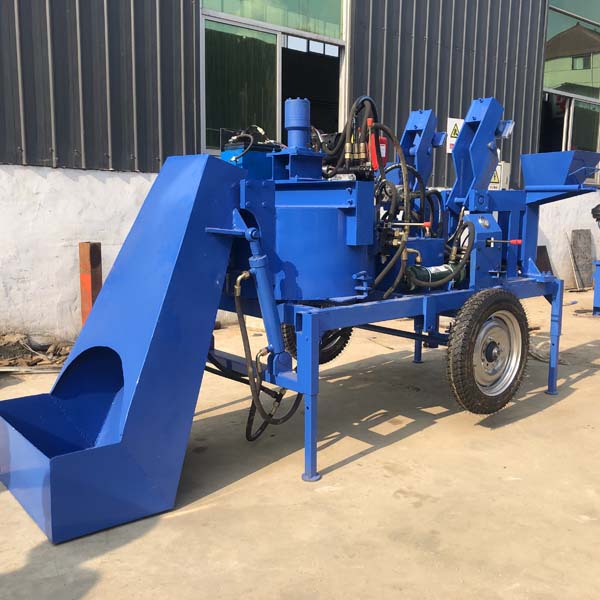
Image source:Aiwei block machine
Introduction
The Chinese brick making machine industry has experienced remarkable growth and development in recent years. As a key player in the global construction sector, this industry not only contributes to the built environment but also generates numerous socioeconomic benefits. This article explores the socioeconomic benefits of the Chinese brick making machine industry, highlighting its impact on employment, economic growth, technological advancements, and community development.
Employment Generation
The Chinese brick making machine industry plays a crucial role in employment generation. The industry’s expansion has created a wide range of job opportunities, from skilled technicians and engineers to assembly line workers and administrative staff. The demand for labor in the manufacturing, assembly, and maintenance of brick making machines has stimulated job creation, particularly in regions with a strong manufacturing base.
The employment opportunities offered by the brick making machine industry have a cascading effect on the economy. Job creation leads to increased income levels, improved living standards, and reduced unemployment rates, contributing to social stability and poverty alleviation.
Economic Growth and Industry Development
The Chinese brick making machine industry significantly contributes to the country’s economic growth. The industry’s robust performance and export-oriented nature have made it a vital component of China’s manufacturing sector. The production and sale of brick making machines generate revenue, foreign exchange earnings, and tax contributions, stimulating economic development at both the regional and national levels.
Moreover, the industry’s growth has a multiplier effect on other sectors of the economy. The demand for raw materials, such as steel, motors, and electrical components, drives the development of related industries, further boosting economic activity. The Chinese brick making machine industry’s success has positioned the country as a global leader, attracting foreign investments and fostering technological collaborations.
Technological Advancements and Innovation
The Chinese brick making machine industry has been at the forefront of technological advancements and innovation. Manufacturers continuously invest in research and development (R&D) to improve machine performance, enhance automation, and optimize energy efficiency. This commitment to innovation has led to the development of cutting-edge technologies, setting new standards for the industry worldwide.
Technological advancements in brick making machines have resulted in higher productivity, improved product quality, and reduced environmental impact. Advanced features, such as automated controls, digital monitoring systems, and energy-saving mechanisms, have revolutionized the efficiency and sustainability of brick production processes. These innovations not only benefit the industry but also contribute to global efforts in sustainable construction and resource conservation.
Community Development and Infrastructure
The Chinese brick making machine industry contributes to community development by supporting infrastructure projects and local development initiatives. As the industry grows, manufacturers often invest in the construction of modern production facilities, research centers, and training institutes. These infrastructure developments create a favorable business environment, attract skilled workers, and enhance the overall industrial ecosystem in the region.
Additionally, the industry’s growth stimulates the demand for ancillary services, such as transportation, logistics, and maintenance, further contributing to the development of supporting industries and local businesses. This spillover effect strengthens the local economy, enhances infrastructure connectivity, and improves the quality of life for residents.
Skills Development and Knowledge Transfer
The Chinese brick making machine industry promotes skills development and knowledge transfer. Manufacturers provide training programs and workshops to equip workers with the necessary technical expertise in machine assembly, operation, and maintenance. These initiatives contribute to the professional development of the workforce and enhance their employability in the broader manufacturing sector.
Furthermore, the industry encourages knowledge transfer through collaborations with research institutions, universities, and international partners. Joint research projects, exchange programs, and technology transfers facilitate the exchange of ideas, best practices, and innovations. This knowledge sharing enhances the industry’s capacity for innovation and strengthens its global competitiveness.
Environmental Sustainability
The Chinese brick making machine industry has embraced environmental sustainability as a core principle. Manufacturers have prioritized the development of eco-friendly technologies and processes to reduce the environmental impact of brick production. Advanced brick making machines incorporate energy-efficient motors, waste recycling systems, and emission control mechanisms to minimize resource consumption and carbon footprint.
The industry’s focus on environmental sustainability aligns with global efforts to address climate change and promote sustainable construction practices. By producing eco-friendly machines and advocating for sustainable brick production methods, the Chinese brick making machine industry contributes to a greener and more sustainable built environment.
Conclusion
The Chinese brick making machine industry brings numerous socioeconomic benefits to the country and the global construction sector. From employment generation and economic growth to technological advancements and community development, the industry’s impact is far-reaching. Through its commitment to innovation, skills development, and environmental sustainability, the industry continues to drive progress and shape the future of the construction industry.
As the industry expands, it is important for Chinese brick making machine manufacturers to maintain a balance between economic growth and sustainable development. Continued investments in R&D, collaboration with stakeholders, and adherence to environmental regulations will ensure that the industry continues to deliver socioeconomic benefits while minimizing its environmental footprint. By embracing these principles, the Chinese brick making machine industry can serve as a model for sustainable manufacturing and contribute to the global transition toward a more sustainable and prosperous future.
